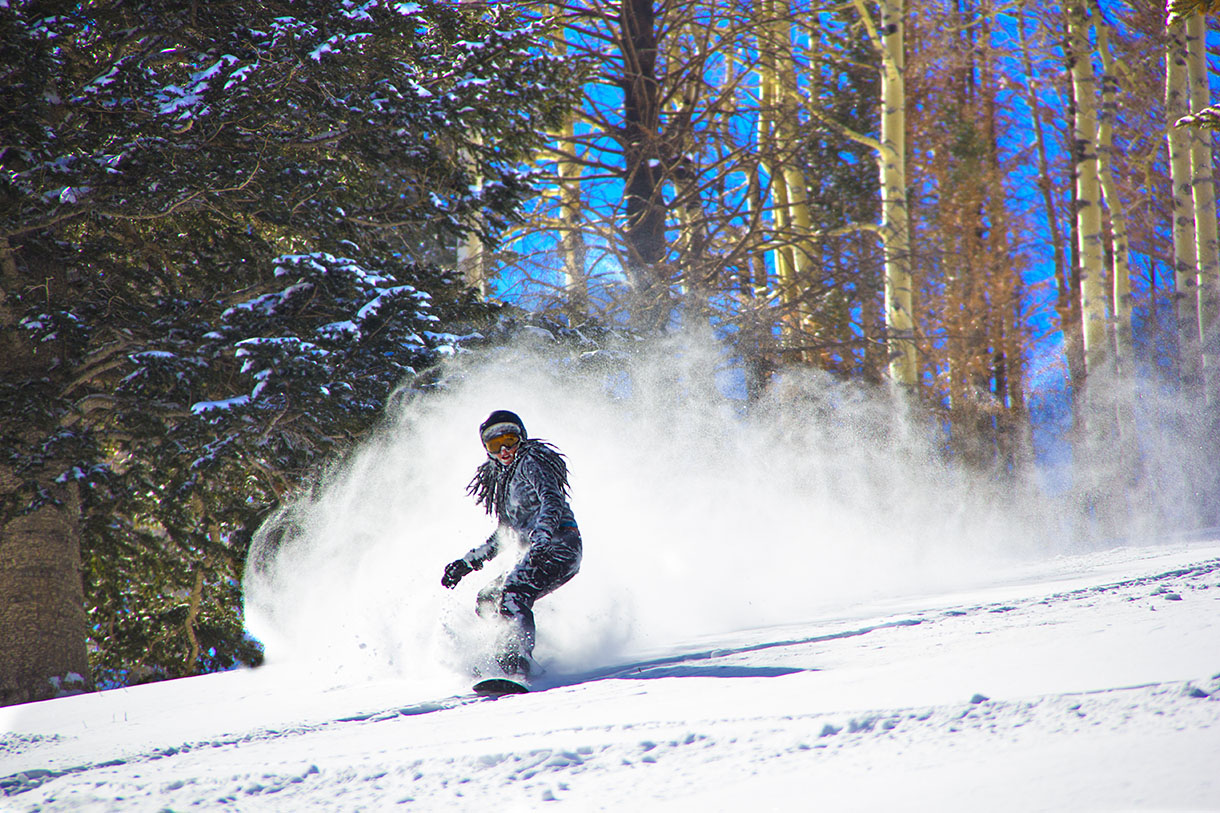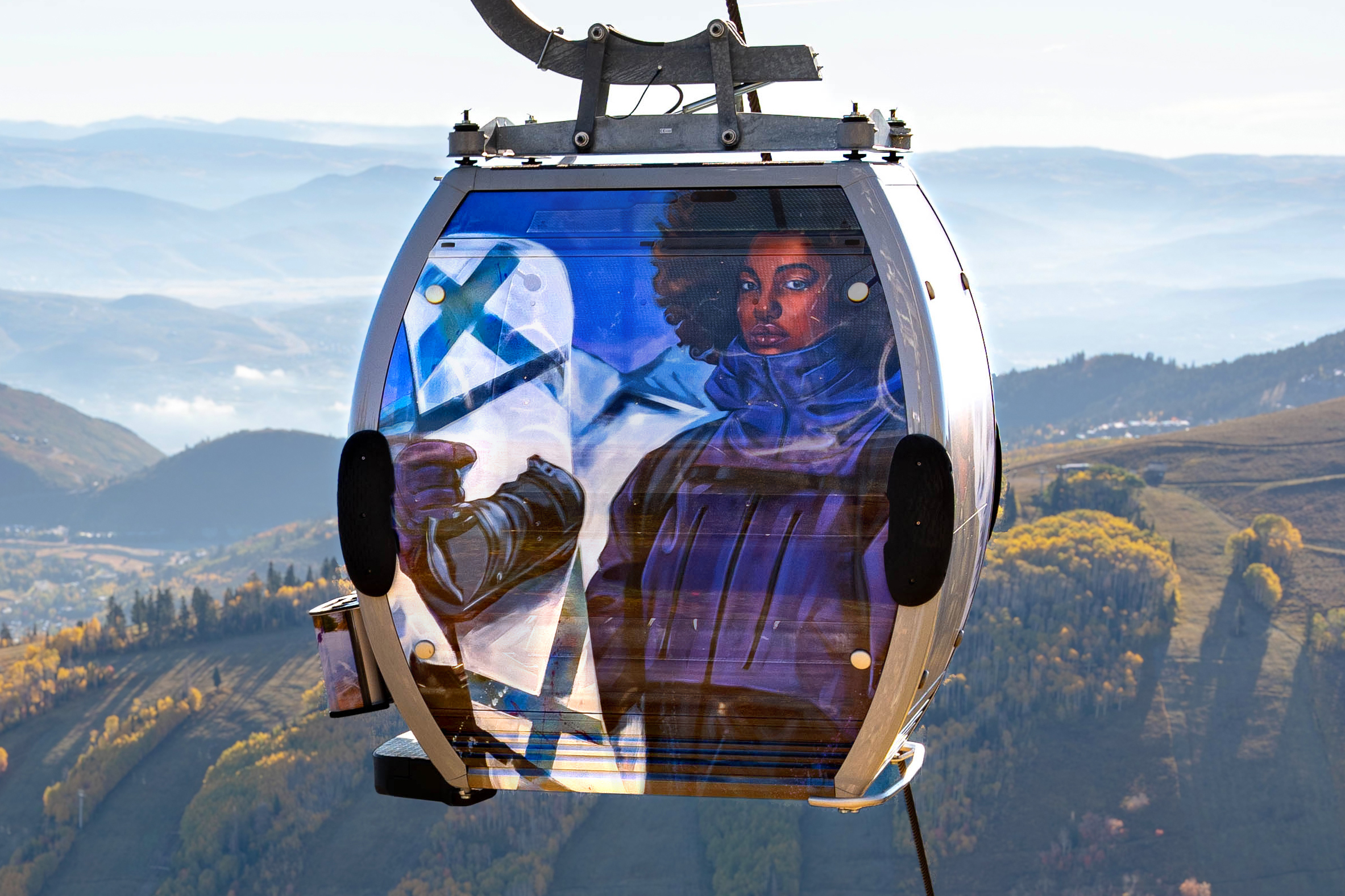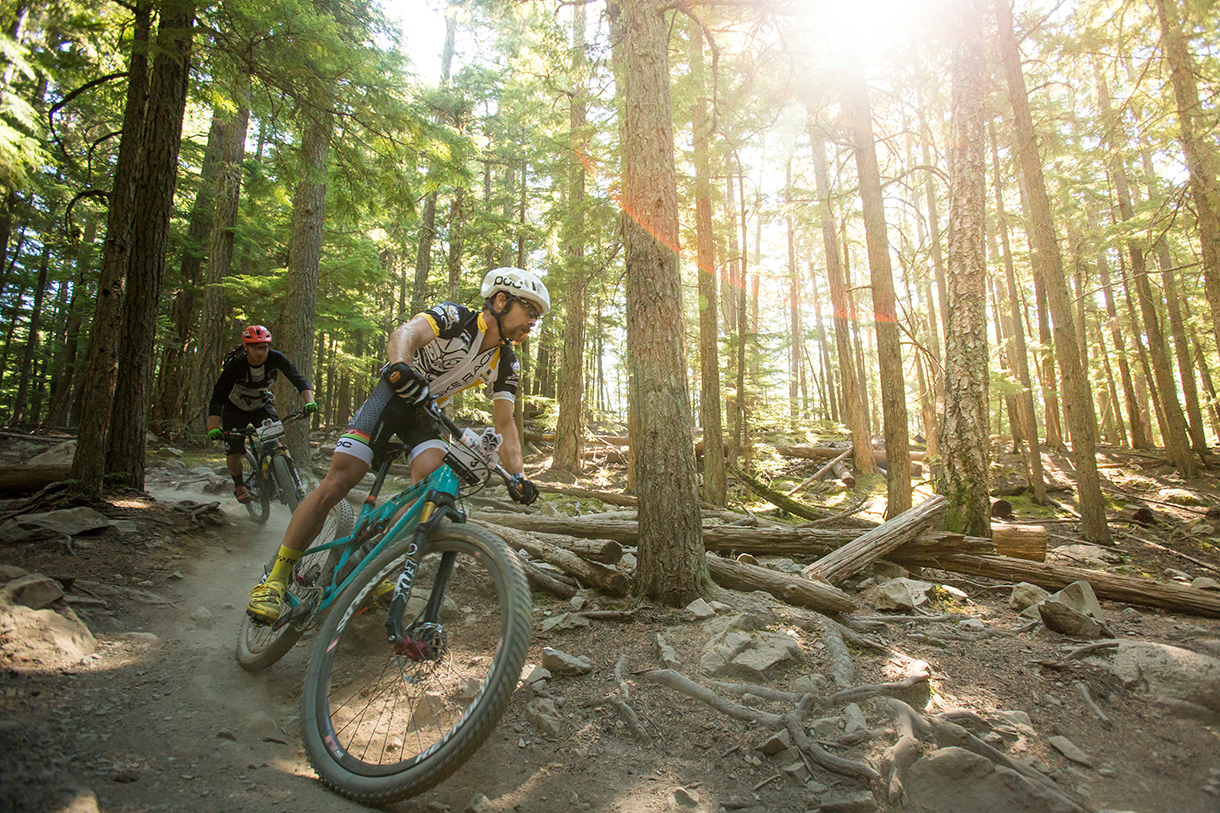
Deep snowboarding: The first meters
A day in fresh powder is the perfect snow experience for many snowboarders. Spectacular runs, a magnificent panorama and the feeling of freedom attract deep snow fans to untouched slopes again and again. For inexperienced riders, getting started can be a bit unfamiliar; after all, the challenges in powder are different than on the slopes. But with a little practice, most boarders feel perfectly at home in the new terrain.
 Perhaps the most difficult thing to do in soft and deep snow is to balance against the ever-changing snow resistance. If you shift your weight too much in one direction at too low a speed, the edge will sink in and you’ll lose your balance. The best way to prevent this is to always stand on the snowboard ready to move. If necessary, you can make compensating movements this way. When doing so, you must always adapt your movements and your speed to the conditions – many riders underestimate the difficulty of steering in deep snow.
Perhaps the most difficult thing to do in soft and deep snow is to balance against the ever-changing snow resistance. If you shift your weight too much in one direction at too low a speed, the edge will sink in and you’ll lose your balance. The best way to prevent this is to always stand on the snowboard ready to move. If necessary, you can make compensating movements this way. When doing so, you must always adapt your movements and your speed to the conditions – many riders underestimate the difficulty of steering in deep snow.
Snowboarding in powder: tips for beginners
To get started, seek out deep snow sections between or next to the slopes. The route should not be too long and, if possible, should not include flat sections, as you will not be able to push your board if you fall or get stuck. So in this case you would have to trudge through the deep snow back to the slope. If you’ve ever had to go through that, you know how much energy that takes.
Familiarization phase on small sections to try out
Ski straight ahead in deep snow for a short distance, shifting your weight to your back leg.
Variations
From the edge of the slope, alternate a turn in the powder and on the slope. As soon as you enter the deep snow, adjust your position. If you stand too far forward, the board will be pushed under the snow. A quick load change to the rear pulls the nose back out of the snow and you can make a turn.
Play with positions. Stretch and bend your legs while shifting your weight backward.
In deep snow, keep pressing firmly on the back foot. Bending the legs and pressing on the back foot compacts the snow, which will still play an essential role later in the powder turn.
Powder Ollie
The key to turning the board in powder later on is the pressure built up on the back foot. Do an ollie from a deep position in a cross-country run in powder, bouncing slightly off the back foot. There is a lot of pressure at the beginning of the upward movement, pushing the snow down and compacting it. You can then use the slightly firmer snow as a good jumping base. It is important that you choose a sufficient tempo.
Next: increase speed in deep snow.
Go back to the beginning here.
Even more info on skiing and snowboarding technique topics can be found in the curricula of the German Ski Instructors Association:
DSLV Lehrplan – Skifahren einfach, 2012, ISBN 978-3-8354-0869-2
DSLV Lehrplan – Freeriden einfach, 2012, ISBN 978-3-8354-0872-2
DSLV Lehrplan – Snowboarden einfach, 2012 ISBN 978-3-8354-0870-8
Insider-Tipp
In deep snow, it is important to find a position that ensures sufficient lift while still allowing for movement. Shift the body’s center of gravity slightly to the back leg. The shoulder belt and snowboard longitudinal axis remain parallel to each other, but the position often needs to be functionally adjusted to allow for compensatory movements.
News
[qodef_blog_list type=“masonry“ number_of_columns=“one“ space_between_items=“small“ orderby=“date“ order=“DESC“ image_size=“custom“ post_info_author=“no“ post_info_date=“no“ post_info_category=“no“ number_of_posts=“2″ category=“news“ custom_image_width=“316″ custom_image_height=“178″]Partner
News
[qodef_blog_list type=“masonry“ number_of_columns=“one“ space_between_items=“small“ orderby=“date“ order=“DESC“ image_size=“custom“ post_info_section=“no“ number_of_posts=“2″ category=“news“ custom_image_width=“316″ custom_image_height=“178″]Partner
Leave a Comment
Du musst angemeldet sein, um einen Kommentar abzugeben.




